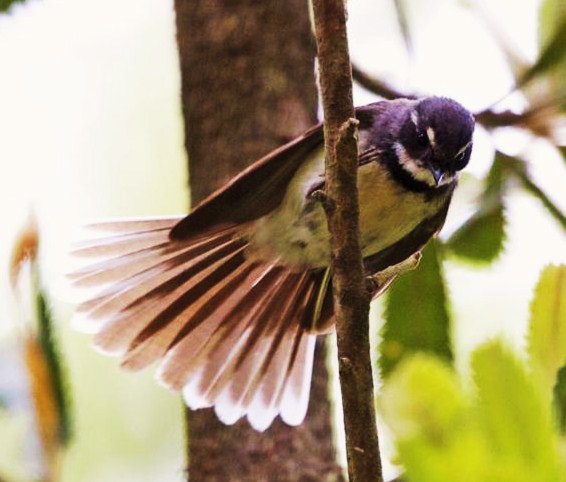Rhipidura fuliginosa
Common name:
grey fantail (en); cauda-de-leque-cinzento (pt); rhipidure gris (fr); abanico gris (es); graufächerschwanz (de)
Taxonomy:
Order Passeriformes
Family Rhipiduridae
Range:
Grey fantails are found throughout Australia and Tasmania, in New Zealand, New Guinea, the Solomon islands, Vanuatu and New Caledonia.
Size:
These birds are 14-16 cm long and weigh 9 g.
Habitat:
The grey fantail is found in a wide variety of habitats from forest and woodland to coastal scrub and gardens.
Diet:
They feed on flying insects, which they catch by chasing them from the edge of foliage at all levels in the canopy.
Breeding:
Grey fantails breed in July-January. Both sexes build the nest, a compact cup, usually placed in the forks of trees, made from moss, bark and fibre, and often completed with spider webs. The female lays 2-4 cream eggs with grey and brown spots, which are incubated by both parents for 14 days. The chicks are fed by both parents and fledge 12 days after hatching. Each pair can raise several broods per season.
Conservation:
IUCN status – LC (Least concern)
Although the global population size is yet to be quantified, this species is described as common to locally abundant over its very large breeding range. The trend direction for this population is difficult to determine owing to the positive and negative processes affecting the species, but overall the grey fantail is not considered threatened at present.








